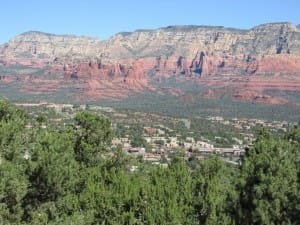Arizona is one of the best states in the U.S. to enjoy the wonders of the scenic desert southwest. If you have not traveled to the desert southwest. Whether it’s the amazing Grand Canyon in the northern part of Arizona or the rugged desert in the southern part of the state, you’ll find plenty of historic sites to explore and fantastic photo ops.
 |
| Flagstaff historic hotel |
There are areas of Arizona where you’ll see the sun 300 or more days per year. It’s one of the reasons many have relocated there and one of the reasons why Arizona is a tourists paradise. Many of these folks who have made the permanent move to the state will tell you that the weather was a big reason why they chose the desert. Arizona is also noted to be the winter residence for a great number of snowbirds from the upper midwest and Canada.
Below are some of the sites you will want to make sure to visit. This of course is not all there is to see in Arizona, but gives you a good sample of popular sites.
Northern Arizona
Many people consider Northern Arizona, namely the Grand Canyon and the gorgeous red rocks of Sedona, reason enough to consider this the Arizona wonders, but there’s plenty more. The Grand Canyon is a must stop for anyone traveling through northern Arizona. It’s a stunning piece of geography and if you haven’t seen it as yet you’ve missed a unique adventure. The scenic trails along the southern rim, the park ranger programs, unique hotels and dining make the Grand Canyon an international destination. Williams, Arizona along Interstate 40 south of the Grand Canyon is where you can pick up the Grand Canyon Railway for a fun ride north to the canyon. Williams is a short drive west of Flagstaff.
 |
| Sedona, Arizona |
Another fun stop in northern Arizona is Petrified Forest National Park. Petrified Forest National Park is an amazing area of scenic wonders and science. The park has two main areas… The southern portion of the park is home to one of the world’s largest and most colorful concentrations of petrified wood, as well as natural log bridges and 225 million year old fossils.
The northern part of the park features the Painted Desert, the name given the multi-colored badlands of the Chinle Formation.
The scenery is amazing and it never seems to end. There is also a very famous historic route known as the Mother Road, more commonly referred to as Route 66. The longest existing portion of the old Route 66 is found in the northwest part of Arizona at Seligman which is worth the drive.
Water Sports
If water sports are of interest to you, one of the more popular lakes is known as Lake Powell. You will find fishing, boating, and jet-skiing, just to name a few activities that are available to the lake’s visitors. Lake Powell was formed by the Glen Canyon Dam in Page, Arizona. Lots of interesting exhibits and tours at the dam you won’t want to miss.
Central Arizona
The Phoenix metropolitan area is part of central Arizona and the largest in the state. Included in the greater Phoenix area is Scottsdale. Scottsdale, Arizona, a town with well over one hundred art galleries, a large variety of craft shops and a wide selection of restaurants is one of the most popular of all Arizona vacation destinations.
 |
| Carriage rides in Old Town Scottsdale |
Located in the Sonoran Desert of Arizona, the Desert Botanical Garden displays over 4,000 different species of desert plants with an emphasis on the Sonoran Desert. Also included is are 400 rare and endangered plant species. The Desert Botanical Garden in Phoenix Arizona is the world’s largest displaying plants and trees from many of the world’s desert regions.
Southern Arizona
Saguaro National Park, located west of Tucson, is both enchanting and mysterious. The lush desert floor is highlighted by stately Saguaro cactus and a great many smaller trees and shrubs.
Two year-round visitor centers offer museums, films, and helpful personnel and literature.
Catalina State Park sits at the base of the majestic Santa Catalina Mountains outside Tucson. The park is a haven for wildlife and desert plants including nearly 5,000 saguaros. The 5,500 acres of foothills, canyons and streams invites camping, hiking, horseback riding, picnicking and bird watching.
 |
| Horseback riding is big in Arizona |
In the far southeast part of Arizona near the Mexican border is the historic town of Bisbee. This is an old mining town that at one time was one of the largest communities between St. Louis and the west coast. Here you won’t want to miss the Bisbee Mining & Historical Museum. Located just down the road from Bisbee is the old west historic town of Tombstone.
As mentioned above, there are scores of fun, scenic, educational and historic tourist venues in Arizona. The ones described in this article are just a small sample of what is awaiting for you in Arizona. Enjoy and explore the southwest with a fun Arizona adventure.
(Article and photos copyright Trips Into History)


